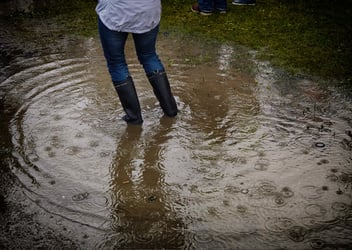When you have a homeowner’s insurance policy, everything it covers is assigned a value. This includes your home itself and most of its contents, like your computer and furniture. These things are likely to decline in value over time from wear and tear and age, which is called depreciation.
If your home has suffered a loss, your homeowner’s insurance policy should reimburse you the actual cash value (ACV) of the damaged property, which is the measure of the value of the property; this is not the replacement cost, which is what it costs to replace something at its pristine condition. The ACV is determined by subtracting the depreciation from the replacement cost.
How Depreciation is Determined
Depreciation is determined by how long ago something was purchased, its condition, and whether or not newer models have been released. For example, you bought a new television four years ago for $1,000, but versions of it of a similar age and quality are now being sold for $600, then it has depreciated by $400.
Your insurance company will first give you a check to cover the depreciated value of the item. Then, once you have gotten it replaced or repaired, your insurance company will give you a check for the recoverable depreciation. This is intended to encourage you to use the first check to actually repair your home or replace your items; if you use the first part of your check on things that are not related to these repairs and replacements, you will be forfeiting the recoverable depreciation payment.
How Recoverable Depreciation Works
If your insurance policy has recoverable depreciation, then you can claim the depreciated value too; in the example of the $1,000 television that has depreciated by $400, you would be able to claim that $400.
Not all insurance policies have recoverable depreciation in them, so it is important to find out if your policy includes this. Sometimes, there are clauses in the insurance policies that can make your recoverable depreciation become not recoverable; for example, there may be a certain deadline for you to replace or repair something, and if it is not done in that time, the depreciation becomes non-recoverable.
You can purchase a more expensive replacement for your lost items, but you will only be reimbursed for the replacement cost by your insurance company. In the case of the $1,000 TV, you can buy a bigger one for $1,200, but you will only receive $1,000 from your insurance company after the recoverable depreciation kicks in.
Deductibles and Recoverable Depreciation
If your insurance policy has a $1,000 deductible, and your ACV for an item is $1,000, then it is not worthwhile to file an insurance policy, since your deductible is going to prevent you from actually getting any money back. However, if your recoverable depreciation would get you an extra $500, then it would be worthwhile since you will still be getting something back for your insurance claim.
Conclusion
Having recoverable depreciation in your insurance policy can increase your insurance payout in a claim, especially if you are filing a large claim. If you need help maximizing your claim to get the most out of your recoverable depreciation, a public adjuster can help you navigate your insurance claim and get the most out of it.




 Storm Damage
Storm Damage  Property Damage
Property Damage Appraisal Services
Appraisal Services Contact Us
Contact Us




.jpg)
 claims@ucspa.com
claims@ucspa.com Mon-Fri: 9:00am-5:00pm
Mon-Fri: 9:00am-5:00pm